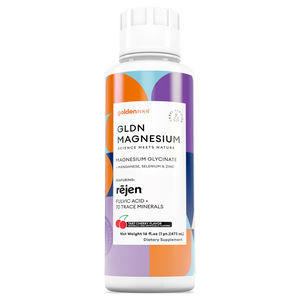For tight muscles, cramps, or post-workout soreness, you’ve probably heard that magnesium might help.
However, with so many types available, such as glycinate, citrate, and malate, which one actually works best for muscle relaxation?
The most effective forms of magnesium for easing muscle tension explain how they work in the body and guide their proper use.
Your restless legs at night or tight hamstrings after the gym can be cured by a magnesium supplement, which can help you relax naturally.
How Magnesium Relaxes Muscles
Magnesium is involved in over 300 biochemical processes, and muscle function is one of the most important.
Regulating Calcium for Muscle Release
Muscles contract when calcium enters the muscle cells, and they relax when calcium is pushed back out. Magnesium helps control this process by blocking excess calcium, allowing the muscle fibers to relax.
Without enough magnesium, your muscles can stay tight, leading to cramping, spasms, or stiffness.
Read more: How to Take Magnesium for Anxiety: (A Practical Guide)
Impact on GABA and the Nervous System
Magnesium also helps activate GABA, a neurotransmitter that promotes calmness. GABA slows down nerve activity, helping muscles and the central nervous system wind down, especially after stress or physical exertion.
This dual action, which relaxes muscle fibers and calms the nervous system, makes magnesium a natural ally for relieving muscle tension.
Top Magnesium Forms for Muscle Relaxation
Here are the top contenders for relaxing muscles. Each form has unique strengths:
1. Magnesium Glycinate
-
Best for: Nighttime relaxation, chronic tension, anxiety-linked muscle tightness
-
Why it works: Combines magnesium with glycine, an amino acid that promotes calm and sleep.
-
Pros: Gentle on digestion, no laxative effect, high bioavailability
-
Use case: Ideal if you get muscle tightness at night or struggle with sleep.
2. Magnesium Malate
-
Best for: Muscle pain, fibromyalgia, exercise recovery
-
Why it works: It contains malic acid, which plays a role in cellular energy production and lactic acid clearance.
-
Pros: Energizing without being overstimulating; supports muscle recovery
-
Use case: Great for daytime use or post-workout soreness.
3. Magnesium Citrate
-
Best for: Occasional cramps and general magnesium supplementation
-
Why it works: Highly bioavailable and fast-absorbing
-
Cons: Can cause loose stools in some people
-
Use case: Ideal if you also need mild digestive support, but not great before bedtime.
Read more: Magnesium for Sleep Side Effects: What to Expect and How to Manage Them
4. Magnesium Chloride
-
Best for: Topical use and fast absorption
-
Why it works: Absorbs well through skin and digestion; used in lotions and sprays
-
Pros: Good for targeted muscle relief when applied directly
- Use case: Ideal for on-the-spot relief, such as tight calves or shoulders.
5. Magnesium Sulfate (Epsom Salt)
-
Best for: Soothing baths and stress relief
-
Why it works: Soaking in Epsom salts allows magnesium ions to interact with skin and muscles, though systemic absorption is still debated.
- Use case: Ideal for relaxing bath soaks after a long day or a tough workout.
Read more: Magnesium for Anxiety, Sleep, and Stress: (Everything You Need to Know!)
Comparing Efficacy & Tolerability
|
Magnesium Type |
Bioavailability |
Common Side Effects |
Best For |
|
Glycinate |
High |
Minimal |
Nighttime muscle relaxation |
|
Malate |
High |
Rare (may energize) |
Post-workout, fibromyalgia pain |
|
Citrate |
Moderate–High |
Loose stools |
Daytime use, occasional cramps |
|
Chloride |
High (topical/oral) |
Skin irritation (rare) |
Spot treatments with sprays/oils |
|
Sulfate |
Variable (topical) |
None in baths |
Full-body soaks for stress & pain |
-
Best all-around: Magnesium glycinate
-
Best for active individuals: Magnesium malate
-
Best for short-term cramp relief: Magnesium citrate
-
Best topical option: Magnesium chloride
- Best for baths: Epsom salt (magnesium sulfate)
How to Use Magnesium for Best Results
Recommended Dosages
-
Daily range: 200–400 mg elemental magnesium for most adults
- Always check the elemental magnesium amount listed on the supplement label, not just the total compound weight.
Read more: Liquid vs. Capsule Magnesium: (Choosing the Right Supplement for You)
When to Take It
-
Post-workout: Magnesium malate or citrate can support muscle recovery.
-
Before bed, magnesium glycinate helps promote muscle relaxation and a restful sleep.
- During cramps, topical magnesium chloride can bring localized relief within 20–30 minutes.
Best Delivery Methods
-
Oral capsules or powders, easy for daily intake
-
Topical sprays/lotions, target tight muscles directly
- Bath soaks (Epsom salt), full-body relaxation and stress reduction
Avoiding & Managing Side Effects
Even natural supplements can cause unwanted effects if misused.
Digestive Discomfort
-
Citrate and oxide forms can act as laxatives.
- If you're sensitive, opt for glycinate or malate.
Skin Sensitivity
-
Some users report experiencing itchiness or a rash with topical magnesium oil.
-
Always patch test and avoid broken skin.
Read more: how to measure 5g of creatine
When to Adjust
-
If you experience diarrhea, reduce the dose or switch to a different form.
- If you don’t feel any muscle relief, consider trying a different type with better bioavailability for your needs.
Key Takeaways!
If your muscles are constantly tight, cramping, or sore, magnesium could be the missing piece. But not all forms are created equal.
- For nighttime relaxation, go with magnesium glycinate.
- For post-exercise support, choose magnesium malate.
- For targeted relief, try magnesium chloride sprays or Epsom salt baths.
Finding the right form and the right timing can turn magnesium into your go-to muscle relaxant. As always, if you’re unsure, consult a healthcare provider to determine the best match for your body and lifestyle.
Read more: Magnesium for GLP-1 Therapy (Boost Recovery, Sleep Quality & Metabolism)



